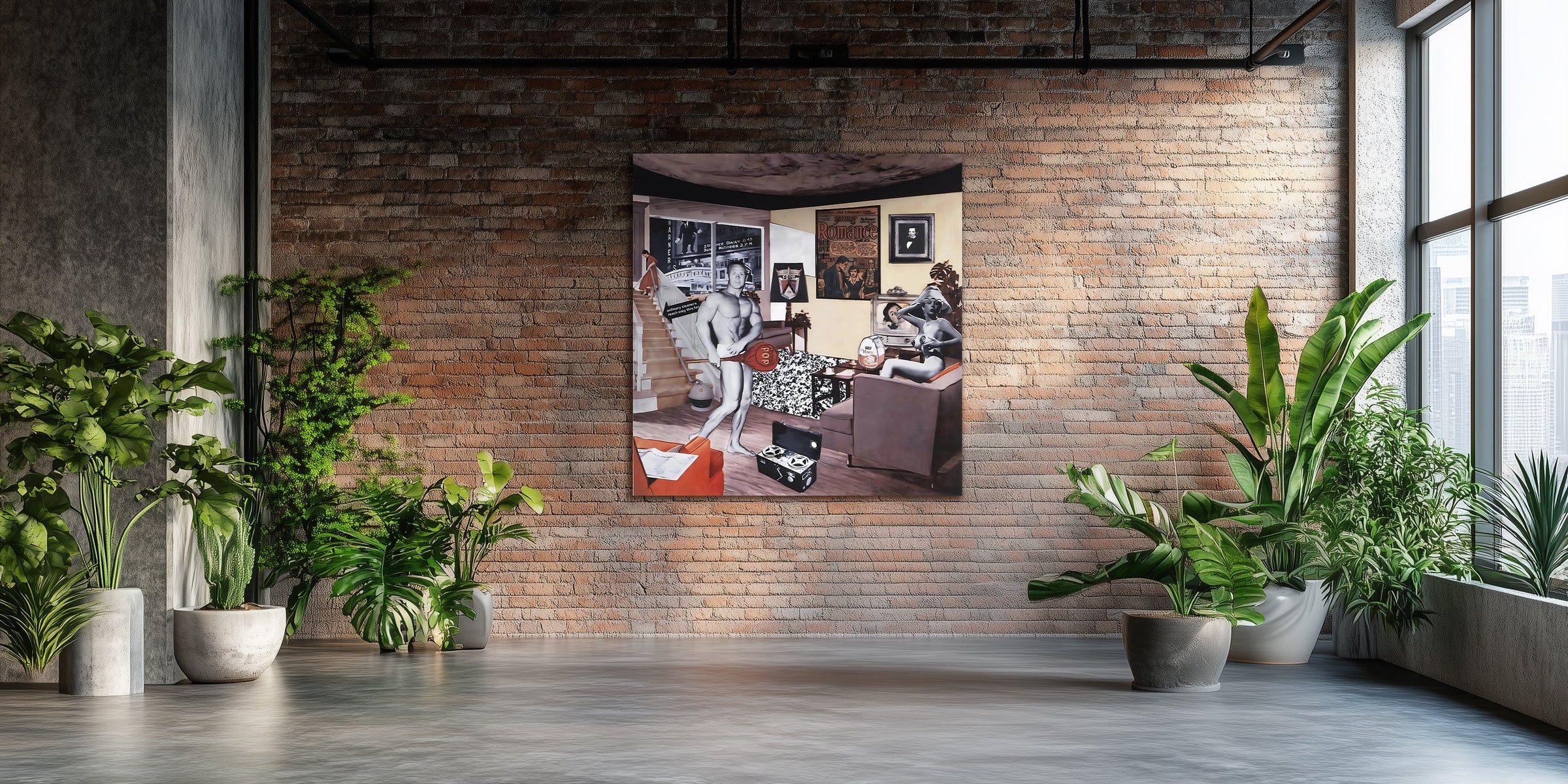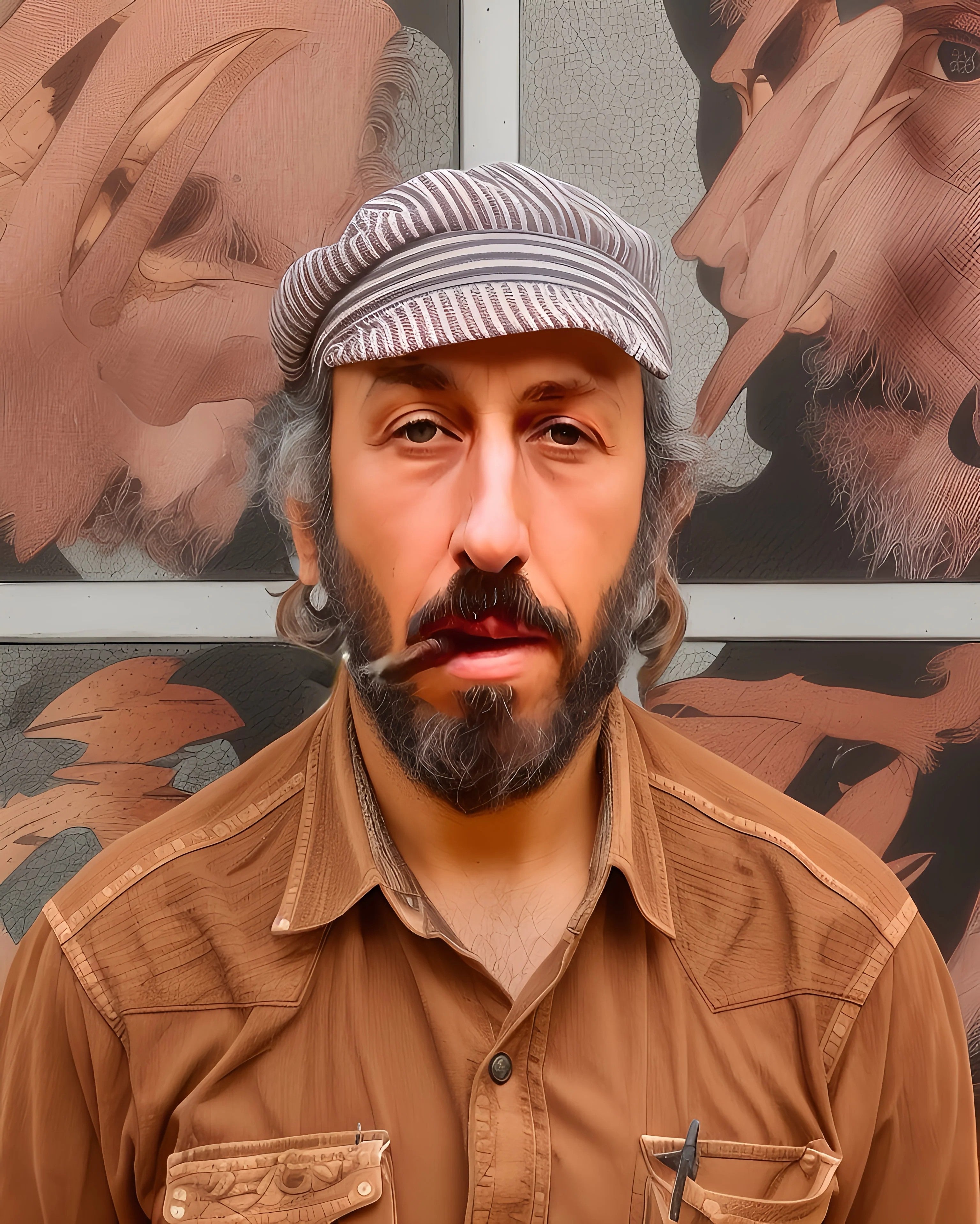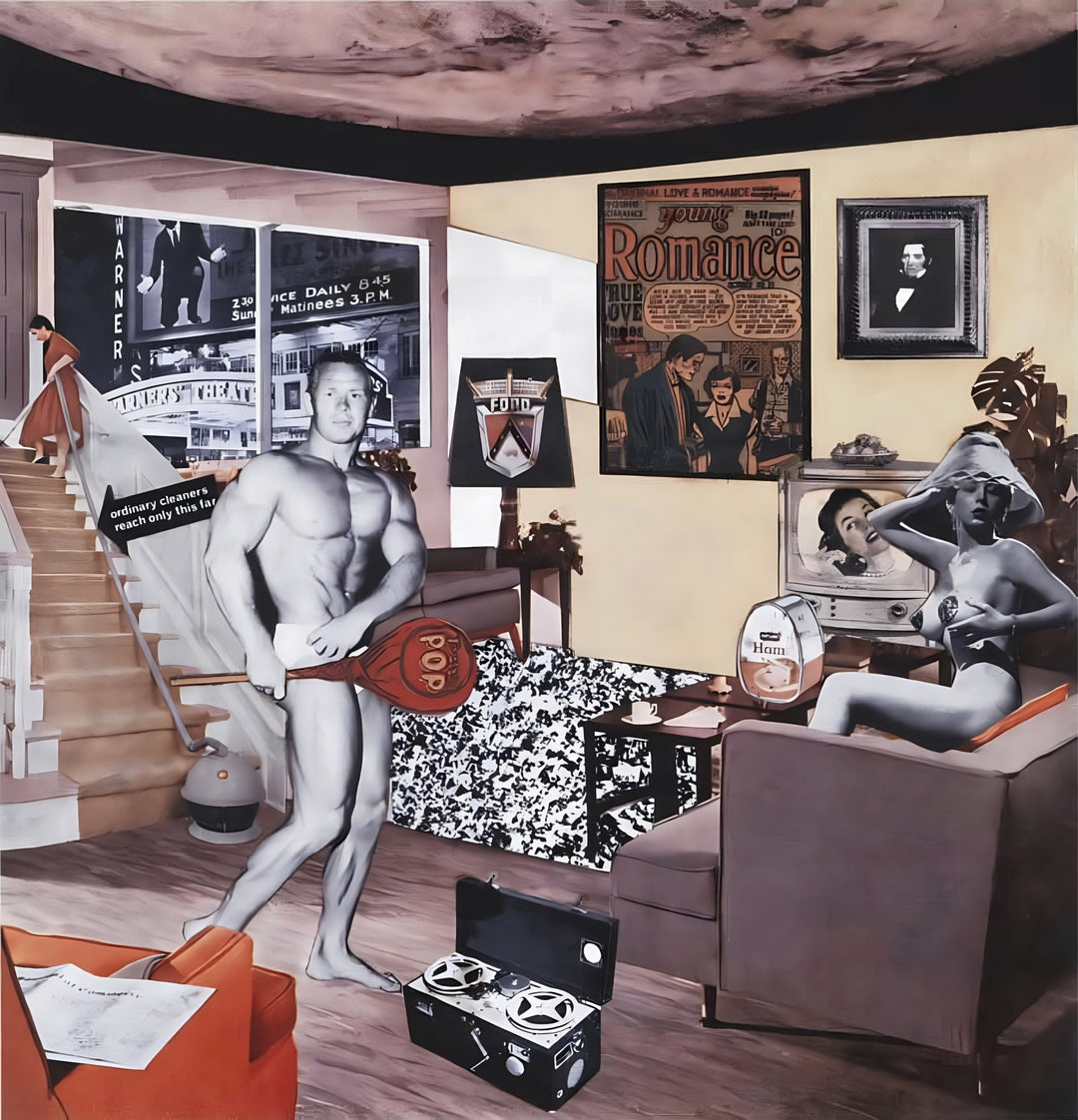
Richard Hamilton

Richard William Hamilton, considered the father of British pop art, was born in London in 1922. He was a pioneer in integrating images from popular culture and the media into his work, noted for his wit and social critique. His 1956 collage, "Just what is it that makes today's homes so different, so appealing?", is one of the earliest examples of pop art and reflects his ability to combine elements of advertising and mass culture into a single coherent and provocative piece.
Hamilton was influenced by the Dadaism movement, particularly by the use of collage and the emphasis on irony and the absurd. In turn, American pop art, led by artists like Andy Warhol and Roy Lichtenstein, also had a significant impact on his artistic development. Hamilton adapted these elements to a British context, creating a unique form of pop art that reflected the particularities of post-war British society. His focus on popular culture and the media paved the way for artistic movements like neo-pop and conceptual art. Artists like Damien Hirst and Jeff Koons have acknowledged Hamilton's influence on their works, especially in their use of sarcasm and cultural critique.
The founder of British art also collaborated with other artists of his time, which enriched his perspective and allowed him to experiment with different media and techniques. One of his most notable collaborations was with Marcel Duchamp, whose work and philosophical approach strongly resonated with Hamilton, leading him to explore new forms of conceptual art.
In his work, this great artist often explored themes related to politics and technology, anticipating many of the concerns that would define contemporary art in the following decades. His ability to anticipate and comment on cultural and technological changes secured him a prominent place in the history of modern art.
